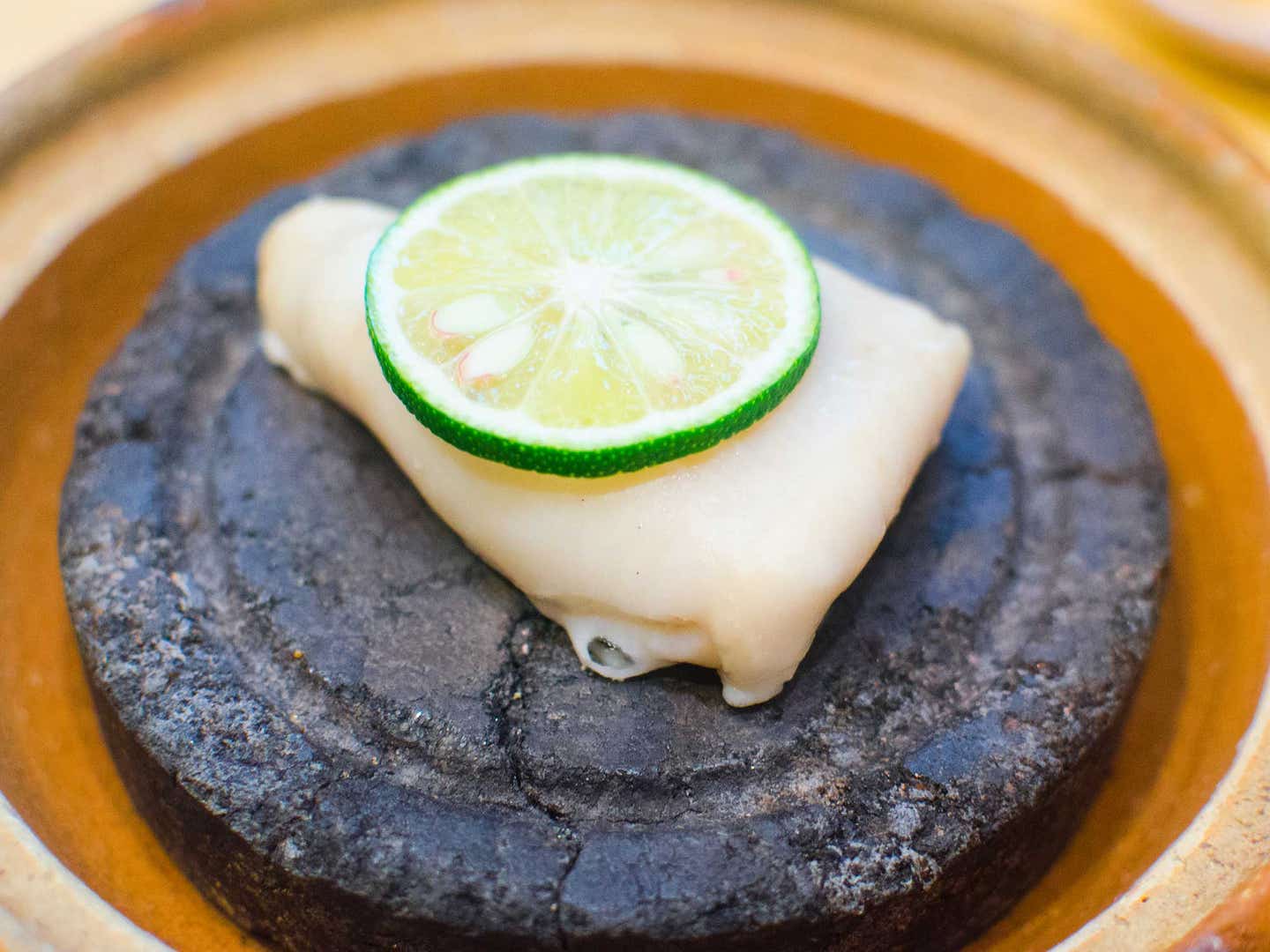
“Is that liver?”
“I don’t think liver bubbles like that.”
This is table talk at Yamashita Restaurant in Kanazawa, Japan where, five courses into an outstanding omakase meal, our chef, Mr. Yamashita, asks if we like blowfish.
Of course we do.
A few minutes later, this arrives. A wobbly alabaster gel sac bubbling away on a hot stone with a thin slice of sudachi lime on top. Yamashita, beaming, watches it cook and wiggle for a few moments, then snatches away the lime with chopsticks and slides what looks suspiciously like a paint scraper under the sac and plops it into a bowl of soy sauce.
“What part of the fish is this? we ask.
“Shirako,” he replies. Still beaming.
And there we have it. Shirako translates literally to “white children.” As in milt. Sperm. Blowfish sperm.
Yamashita is still beaming. The sperm is getting cold.
You do not say no to this kind of hospitality in Japan, so I pick up my bowl of soy sauce, grab the sac with my chopsticks, and take it down in one bite.
It really is delicious. The soy sauce is mild and sweet, the sudachi fragrant, the shirako…well, unmistakably spermy, but with a delicate protein sweetness and a soft texture silkier than the most silken tofu. There’s a balance of cool and warm from the hot stone. And all of this from three ingredients and the most elemental of cooking tools.
Would I have tried it had I not been forced out of politeness and fear of disappointing our chef? Probably not. Would I order it again? Also probably not. But that’s what an omakase meal is for: you surrender and let someone else take control. And by doing so, you learn some things. About your own tastes. About resourcefulness in the kitchen. About how to use a paint scraper in a fine dining setting.
“Did you like it?” Yamashita asks anxiously.
“Oishii!” we reply.
“Good,” he says. “Then I’ll make you some shirako tempura."
Keep Reading
Continue to Next Story










